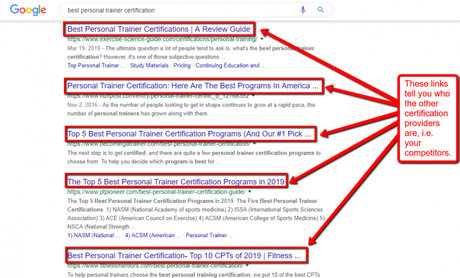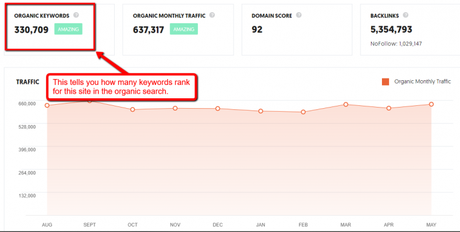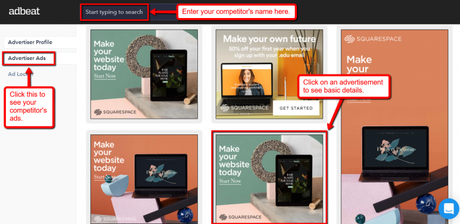
Competitor research can do wonders in your marketing campaign. Your most profound opportunities can often arise from your rivals' performance insights.
"Spying" on their techniques and studying them uncover lessons and ideas that you can use to benchmark and enhance your campaign.
There are several ways for you to keep up with your competitors' techniques.
Here are eight steps to find out what your competitors are doing in their online marketing:
1. Research on who your competitors are.
Finding your competitors does not have to be a complicated process. One of the easiest ways is to search on Google.
For instance, if your company is one that gives out certifications as personal trainers, you can enter that or similar phrases.
I typed in "best personal trainer certification" as an example, and Google came up with these results:

With this simple search, you can find articles that list who the other similar service providers are, or you may find the sites of your competitors themselves.
Another method is to find alternatives. Type phrases like "alternative to <insert your product or service>" on Google, or use tools such as AlternativeTo.
2. Track their social media activity.
It's also good to track your competitor's activity on social media as it contains useful marketing information.
You can look through their social media profiles or use social media listening tools like Awario.
In your dashboard, you can find updates on mentions from which social networking site.
You can also click on the dashboard to see activity reports, not only for your company, but also your competitor for easy comparison.
Here's one example:
Awario provides large amounts of data and insight.
It runs analytics on mentions, reach, language, country, sentiment, and more in different graphical presentations.
3. Analyze their SEO performance.
Any seasoned marketer can confirm how targeting the right keywords keywords can make or break your marketing strategies. (We also recommend Ubersuggest on the post: How to Increase Blog Traffic.)
Choosing the right keywords can help you reach your potential customers, rank highly in SERPs, know the profitability of your brand, and discover how your competitor is faring.
Tools like Ubersuggest can help you unearth your competitor's keyword strategies.Type in their domain name, and Ubersuggest shows an overview of the results.
As an example, I used "moz.com."

The tool revealed the number of organic keywords for the website and rated it as "Amazing."
Besides the keywords used, Ubersuggest also reveals further information, such as monthly volume and the web page's position in ranking for organic searches.

Once you determine the keywords your competitors are targeting for optimization, you can improve or recreate your SEO strategy.
Remember, don't to use precisely the same keywords if there is a big difference in online visibility and size between you and your competitor(s). Sometimes you have to go after long-tail keywords initially as you are growing and trying to bring in traffic as a smaller competing site.
You can, however, take note of those keywords for your marketing schemes. Vary your target keywords using tools like AnswerThePublic. (Visit this site, just for the bizarre home page.)
4. Check out their websites and enable alerts.
This strategy may seem like over-simplified, but it can provide useful information about their online marketing habits and their successes.
Search your competitor on Google, and read through their title, domain name, and meta-description. Check out the tone, words, style, and elements present such as their Call-To-Action (CTA). A site we personally love, Backlinko does a great job telling you who they are what they are good at doing with their search listing.
When you visit their website, you can also see new product discounts and releases, appearance updates, categories, and many more help sales information acting as superb CTAs.
It's also helpful if you track alerts about your competitor through Google Alerts.
When you start tracking your competitor's alerts, Google will notify you of any new content about or by your competitor. Be sure to use their name, url and any important products or people associated with them. You may also consider adding your own brand or company name to keep tabs on what the Internet is "saying" about your company.
5. Study their content strategy.
Studying your competitors' content strategy helps you find out what ideas and techniques are working for them.
As you spy on their content, find out the following:
- What are the topics they focus on?
What kind of content do your competitors frequently post about? Is it digital marketing, e-commerce, cybersecurity, or others? - What is the style and format used?
Do they write more informal content, personal opinion, or educational guides? That determines if they take on a casual and friendly tone, or a professional, technical one. There will likely be a mix, but see what serves them better overall. - What is the type of content that works best for them?
Do they post only narrative content, or do they also embed photos, videos, and interactive assets? Which type do they capitalize on?
The answer to these questions can help you compare and decide how to introduce content to your site and what your blog should look like. You do have a blog, don't you?
Remember also that content is king. Businesses commonly use compelling marketing content (with CTAs) to increase their sales.
If you find your competitors' content is better than you have the time or expertise to compete with, you might consider hiring freelance writers with marketing skills to help you out. Problogger has job search board to help you find experts in a variety of areas. You can post jobs and target expertise.
6. Find out the tools and technologies they're using.
Seeing how the competitor's site was built and what tools they are using to create and manage their success is an easier task than you would think. Finding out the tools and apps used by your competitor can give you a big leg up in terms of learning from what they are doing now, and giving you a blueprint to follow. This is can be done using tools like Wappalyzer.
To show you how the tool works, I looked up Forbes.com as an example:
With the discovered technologies used in their site, you can have an idea of what they are targeting and how what tools and technology they are using to do it.
7. Subscribe to receive emails and updates.
By subscribing to their newsletters and email updates, you get to experience firsthand how your competitors conduct their email marketing campaigns and how they interact with their consumers.
You can see how frequently they email their subscribers, and the kind of messages they have, including subject line words, length, imagery and so on.
Receiving messages for which specific event, such as first-time sign-ups, abandoned carts, and birthdays, gives you an idea on the email automation strategies they employ.
Besides subscription, you can use email monitoring tools to study their campaigns more closely.
Examples of these tools include Mailcharts, Owletter, and Sendview.
8. Monitor their ads.
Observing and monitoring your competitor's ad campaigns can help you decide on how to produce, improve, and manage yours. You may see points you like and some you wish to avoid. More importantly you wnt to know cost and placements of those ads.
Tools like Adbeat can help you study those ads.
Here is how the tool works with "Squarespace" as the sample competitor searched:

Adbeat allows you to check out the ads they are using. When you click or hover on one, you will see details like the dates the ad is run, the size, and 7-day trend.
You can also view their profile, which contains lots of information and analytics on their ads, such as their longest running ad, channels, publishers, and a whole lot more.
Wrapping Up
- Research on who your competitors are.
- Track their social media activity.
- Analyze their SEO performance.
- Check out their websites and enable alerts.
- Study their content strategy.
- Find out the tools and technologies they're using.
- Subscribe to receive emails and updates.
- Monitor their ads.
Leveraging these ways should provide sufficient insight into improving your marketing campaign once you start applying them.
Do you have other strategies in mind? Feel free to share them below, and be the first to share this post to your friends. Cheers!
Here's a recap of the eight ways to spy on your competitors: